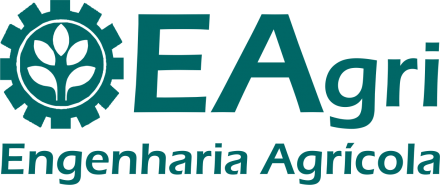CADASTRO DAS ÁREAS IRRIGADAS POR PIVÔS CENTRAIS, EM MINAS GERAIS, UTILIZANDO IMAGENS DO SATÉLITE CBERS-2B/CCD
Engenharia Agrícola
CADASTRO DAS ÁREAS IRRIGADAS POR PIVÔS CENTRAIS, EM MINAS GERAIS, UTILIZANDO IMAGENS DO SATÉLITE CBERS-2B/CCD
Autor Correspondente: ELIZABETH FERREIRA | [email protected]
Palavras-chave: agricultura irrigada, sensoriamento remoto, sistema de informação geográfica (SIG), interpretação visual de imagens.
Resumos Cadastrados
Resumo Português:
As imagens de satélite de média resolução são bastante utilizadas para a identificação e
quantificação de áreas irrigadas por pivô central. Essas áreas, por apresentarem formas
predominantemente circulares, podem ser facilmente identificadas por meio de análises visuais
dessas imagens. Além da identificação e quantificação das áreas irrigadas por pivô, a adição de
outras informações complementares a estas áreas é fundamental para gerar mapas cadastrais. O
objetivo deste trabalho foi gerar um mapeamento cadastral das áreas irrigadas por pivôs centrais no
Estado de Minas Gerais com a finalidade de suprir a carência de informações relativas à agricultura
irrigada. Utilizando imagens do satélite CBERS2B/CCD, foi feita a identificação e quantificação
das áreas irrigadas e, em seguida, foi associado um banco de dados contendo informações sobre: a
área irrigada, o perÃmetro, o municÃpio, a órbita-ponto, a bacia hidrográfica na qual o pivô está
localizado e a data de aquisição da imagem. Foram identificados 3.781 sistemas de pivôs centrais.
A menor área irrigada foi de 4,6 hectares, e a maior foi de 192,6 hectares. O valor total estimado de
área irrigada foi de 254.875 hectares. O maior número de pivôs centrais apareceu nos municÃpios de
Unaà e Paracatu, que apresentaram 495 e 459 sistemas, respectivamente. O mapeamento cadastral é
uma ferramenta muito útil para auxiliar e aumentar a informação sobre a agricultura irrigada no
Estado de Minas Gerais.
Resumo Inglês:
Medium-resolution satellite images have been widely used for the identification and
quantification of irrigated areas by center pivot. These areas, which present predominantly circular
forms, can be easily identified by visual analyses of these images. In addition to identifying and
quantifying areas irrigated by center pivot, other information that is associated to these areas is
fundamental for producing cadastral maps. The goal of this work was to generate cadastral mapping
of areas irrigated by center pivots in the State of Minas Gerais, Brazil, with the purpose of
supplying information on irrigated agriculture. Using the satellite CBERS2B/CCD, images were
used to identify and quantify irrigated areas and then associate these areas with a database
containing information about: irrigated area, perimeter, municipality, path row, basin in which the
pivot is located, and the date of image acquisition.3,781 center pivots systems were identified. The
smallest area irrigated was 4.6 hectares and the largest one was 192.6 hectares. The total estimated
value of irrigated area was 254,875 hectares. The largest number of center pivots appeared in the
municipalities of Unaà and Paracatu, with 495 and 459 systems, respectively. Cadastral mapping is
a very useful tool to assist and enhance information on irrigated agriculture in the State of Minas
Gerais.

